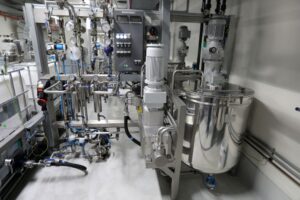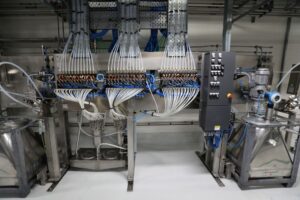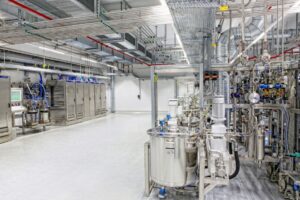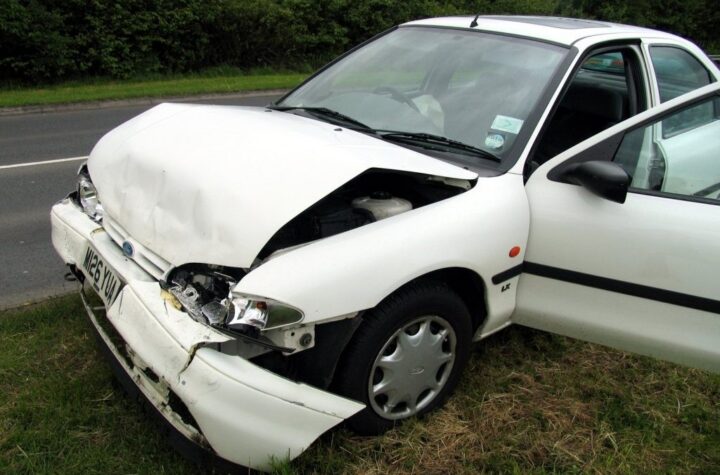
No more than 10 colors cover around 90% of production at car manufacturers. For all other colors, a special paint supply system like the EcoSupply P from Dürr, is worthwhile.
State-of-the-art supply systems optimize material flow, conserve resources, and increase process reliability.
They are also available as cost-effective, standardized solutions, with optionally with 3D models for simple, future-proof expansion. As a result, they provide the perfect balance between quality, economy, and flexibility.
At first glance, material supply in industrial surface coating may seem to be merely a logistical concern. However, state-of-the-art paint supply plays a strategic role, significantly influencing coating quality from delivery container to application.
This is achieved through complete systems that are thoughtfully designed and precisely tailored to users’ specific requirements, whether for automotive paint shops or suppliers coating plastic components.
Traditional material supply includes systems for various paints, hardeners, and flushing media, along with corresponding disposal systems, compressed air distribution, filtration, temperature control, and pipe routing. The design is inherently complex due to the extensive scope of delivery.

What distinguishes a paint supply system that merely ensures smooth material flow from one that also achieves high-level objectives like superior coating quality, process reliability, energy efficiency, and resource conservation?
The answer lies in precise adjustments at various levels, starting with core components such as containers, pumps, and filters.
Process reliability through optimized components
Paint particles do not adhere to the smooth, pore-free surfaces of electro-polished stainless steel containers, reducing the need for manual cleaning. This also eliminates the risk of dried paint residues contaminating surfaces.
The same principle applies to the fluid pistons of the paint delivery pumps, such as those in the EcoPump HP/HPE series which are designed with optimized flow characteristics. The absence of dead spaces prevents paint residue buildup.
Additionally, these pumps feature reduced valve cross-sections, allowing gentle paint transport. This contrasts with conventional pumps, whose high shear forces break molecule chains, reduce paint viscosity, and compromise the material’s structures over time.
The consequences can range from color variations to surface defects on car bodies – unacceptable results that increase reject rate in production.
Another crucial component is high-quality filters, which eliminate unwanted particles from the paint. This protects atomizers from blockages or damage and prevents costly downtime for painting robots.
Regular filter maintenance is essential for reliable operation.
Dürr has significantly reduced this workload with a new one-hand filter design, which can be changed quickly and tool-free. Developed in collaboration with the filter supplier, this solution ensures easy and efficient maintenance.
Ring-pipe systems for high runner colors only
The first step in creating a well-engineered paint supply system is analyzing the client’s process chain to determine the appropriate supply type. For high volume colors, ring-pipe systems are recommended.
Studies show that a maximum of 10 colors – such as white, black, silver, and gray, along with a few others exceeding 5% productions rates – account for around 90% of automotive manufacturing.
For all other colors, piggable special paint supply systems are a more cost-effective and sustainable solution. These systems store paint in climate-controlled paint mixing rooms and deliver it to the painting robot only shortly before a body enters the paint booth.

This approach prevents less frequently used colors from circulating in ring-pipe systems, avoiding shear-related compromises in paint quality.
As a result, paint loss and hazardous waste is minimized. Given the rising cost of specialty paints, piggable systems quickly prove economical by enabling near-complete recovery of unused paint.
The EcoSupply P paint supply system, for instance, offers an average return on investment within approximately one and a half years.
Standby mode for pumps saves energy
In paint circulation systems, factors such container size, proper stirring, air-free container docking, and adherence to flow rates and temperatures specified by paint manufacturers are critical.
Optimized system design ensures the right pressure levels, influenced by pipe diameters, flow speeds, and system layout.
Continuous paint circulation in the ring pipes presents a significant opportunity for energy savings. An efficient paint system reduces pump output in terms of both flow and pressure for paints not currently in use.
For instance, in a typical system with 24 base coat colors, if only one painting robot is active, the pumps for the remaining 23 colors can be put in standby mode. In real world scenarios, multiple robots often require the same color in several zones, resulting in an average production mode usage of 3 to 13%.
Switching pumps for inactive colors to standby mode can reduce energy consumption by up to 85%, whether powered by compressed air or electricity. This simple yet effective approach significantly improves the paint shop’s overall energy efficiency.
Additionally, reduced pressure slows paint circulation, lowering mechanical shear forces, which extends the paint’s lifespan. As a result, costly full-system paint changes are less frequent, reducing the consumption of solvents and flushing agents as well as waste disposal costs.
Standard solution without any compromise on quality
Rising cost pressures across industries make standardized paint supply systems an attractive alternative. These systems are based on fully developed concepts, covering everything from design and process workflows to commissioning protocols and hardware/software specifications.

Beyond cost savings, standard solutions can be implemented more quickly without compromising on process reliability or coating quality.
Thanks to their modular design, these systems can be flexibly adapted to meet varying requirements.
To ensure that state-of-the-art paint supply systems remain flexible for future tasks, customers can opt for a detailed 3D model of the entire setup.
This digital representation provides a comprehensive overview of all the components and disciplines ensuring seamless planning.
It also simplifies future modifications by visualizing potential component conflicts in advance, eliminating the need for time-consuming onsite analyses, such as tracing pipes and accommodating structural complexities.












More Stories
DuPont materials science advances next generation of EV batteries at The Battery Show
How a Truck Driver Can Avoid Mistakes That Lead to Truck Accidents
Car Crash Types Explained: From Rear-End to Head-On Collisions